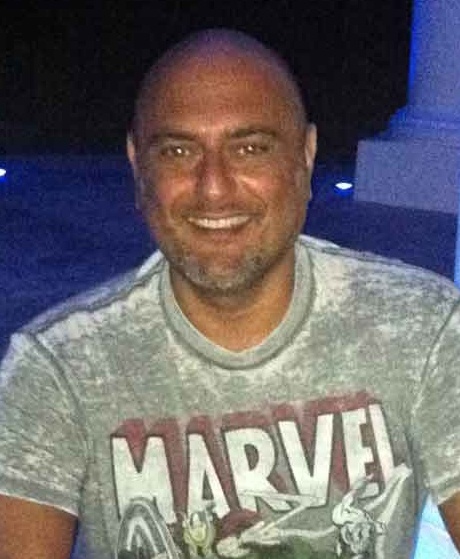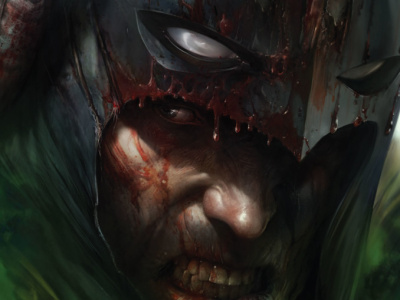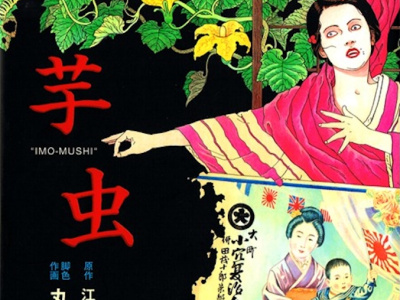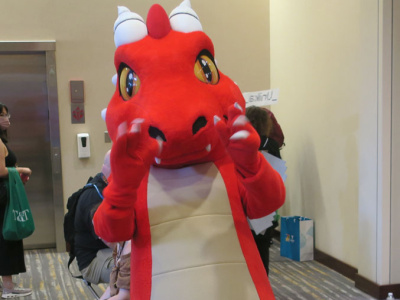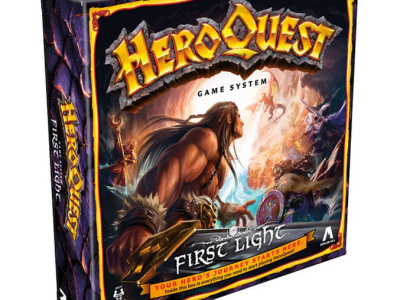We talked to Marvel Senior Vice President -- Print, Sales & Marketing, Marvel Publishing Worldwide David Gabriel at San Diego Comic-Con recently to get his view of the market and talk about some of Marvel’s latest moves. In Part 3 of our three-part interview, we talk about the reasons to re-use Marvel Now!, comic price resistance, Champions, and big graphic novels for the coming seasons. In Part 1, we talked about the overall state of the market, the graphic novel business, international sales, comic stores, and variants. And in Part 2 we talked about a new test in a large mass retailer, the digital market, changing the characters, and the kids market.
We were surprised you went back to Marvel NOW! (see "Everything Old Is NOW! Again"). Why did you do that?
About six months to a year ago, we started having all of these international licensees for publishing and also for consumer goods coming to us saying ‘we want to get the Marvel NOW! titles.' I scratched my head a little bit, and the consumer folks asked me, ‘What’s Marvel NOW!?’ It turns out that what we started four years ago with Marvel NOW! really stuck with them all over the world. And we’ve used NOW! in different ways over the past couple of years, and when we were looking for something to hang our marketing hat on for the end of this year, we said we could try to come up with something new or we could use what everybody already knows. And why should we come up with something new and re-brand everything and re-confuse everybody? Or should we use something that’s selling very well worldwide? Everyone said, it doesn’t make sense. So we changed it up a little bit with shattering the logo, which ended up tying in well to what was going on in Civil War II. It was nice when everything going on in editorial really fit well with what we were doing. We didn’t tell them what to do. It all just meshed very well together.
The price on Civil War II #1 was high, relative to standard pricing. How are you making those decisions and what are you seeing in terms of price resistance?
We make a concerted effort to look at the books every month and try to pinpoint books that if we were to increase their page count and give more value and increase the price, is that going to hurt the sales, and is that going to hurt the retailer. We literally do that the week we’re working on the catalogue.
Do you feel that example (Civil War II #1) was successful?
I think that one was very successful in terms of sell-through. I know people like to think that’s our plan always now. We do #1s, so we’re going to do them on everything. I think $4.99 is a good price. I think $5.99 was also a result of Brian [Michael Bendis] had a larger story to tell that he wanted to get out in one issue. There’s a lot of that. Editors will come in say so-in-so wants to make an issue triple-sized one month because his story is so big. And we say, that’s not a good idea, because when you look at the curve of sales, then we won’t do it. But if there’s something that we can get behind and market and promote, it does very well. For whatever reason, Deadpool at $9.99 sells phenomenally well. And the editor groans when we say we should do another one in a couple of months, because they do very well. They almost double in sales from the regular $3.99 issue.
Again, we watch the sales. If the sales tanked on those issues, we wouldn’t be doing them. It is watched every single month. Even if I say to editorial, ‘can you come up with another 10 pages so we can make a better package,’ it still goes through Axel Alonso to make sure the editorial content makes sense and is not just filler material. And then it goes through checking to make sure the cost of making the book works. It’s not just me saying ‘I want this book to be $5.99’ or an editor saying ‘I want to add 10 extra pages and not do anything.’ But it is a process. We are watching it. It helps our sales and obviously it helps the retailers.
What are you looking forward to through the end of the year for Spring. For your comics you’re sort of rolling things out according to your reveal schedule, so talk a little about that, but more about your book format products.
First, I’m extremely excited, as a 40+-year comics fan of Marvel that we have The Champions back.
What was the IP conflict that had to be resolved?
Legal stuff.
Heroic?
Yeah.
But they started after the original Marvel title.
I don’t know all the details; I let the legal guys handle that. But I can say that when we were talking about this book coming and having Mark [Waid] write it and having it be the teen characters. What we generally do, editorial and sales and marketing, people throw out names. ‘How about this? How about that?’ We make fun of each other. We joke. We yell. It goes on and on and on. And I think I probably said to Tom Brevoort, I think this book should be called The Champions. And he, of course, got a tear in his 40-something year-old eye, and said, ‘it’ll never happen.’ And I said, ‘someone told me I would never get a million unit sales of Star Wars, so we’re going to make this happen.’ I badgered our legal guys and we got everybody who needed to be involved in getting the name back, and we got it back. For comic, that’s one of the top ones.
I’m also interested in The Black Panther by Ta-Nehisi Coates.
When does the graphic novel hit?
That hits I think September/October.
The coloring books continue to amuse me. I certainly love all of the Masterworks that we put out. I started the Epic line about two years ago to sort of replace the Essentials. So every time we get another collection of great 70s and 80s material, of things that probably, at some point years ago, weren’t going to make it to Masterworks, we get very excited about that. Even if people think some of that material was bad, it’s good to have it in one color format to put out.
We’ve been experimenting with some other formats, like the treasury editions. We’ll have two or three of those coming out next year.
You have some Doctor Strange stuff coming out this fall?
In terms of characters, there’s a lot of Doctor Strange material that has not been in print. That’ll be interesting to see how that goes.
You’re bringing back the 70s and 80s stuff. The [Steve] Englehart issues?
There’s a lot of different Doctor Strange stuff coming out.
Guardians, for the movie next year. I think we’ll finally have all the 90s run finished. We’ll have everything that we ever did for Guardians out, which is great.
We toyed with this format called Pop Out characters. It was 20 pages of Skottie Young drawings that you pop out and put them on a stand. The kids that have them, play with them. The adults that have them don’t want kids to play with them, so they buy two books, which is great. We have a few more of those in the works.
Three years ago we launched a $500 box set of Masterworks, reprinting the original run. We followed that up with the Secret Wars run, followed by Civil War in its entirety. For next year, we’ll be doing a Star Wars. It won’t be quite $500 because there wasn’t so much material to put in there. It’ll be all the movie adaptations that have been done over the years up through Force Awakens. So that will all be collected. I’m sure we’ll be doing something with Infinity Gauntlet after that.
Anything else?
One of the books I’m excited about is the Squirrel Girl OGN. OGNs have always been hard sells for us, but we’ve had great success with the Starlin Thanos OGNs. I know a lot of people are looking forward to the Rob Liefeld Deadpool OGN that is still in the works. Rob told me this morning that he’s finished 60 pages of it and hopes to have the rest done in the next couple of months.
And with Squirrel Girl, it will be interesting to see, with the writing team that’s on it (the writers for the series), how that translates into sales and the splash we can make in the book world with that.
I texted some of the guys back at the office saying that I’ve talked to a lot of retailers since I got here, and the buzz from everybody is exactly the opposite of what you might read on the Internet. I don’t want to say much more than that, but it’s very reassuring to know that the sales that we see match up to what the retailers are telling us, which is opposite of what the Internet is saying. And it’s sort of always been that way.
You know we get bashed...
That’s what being #1 is all about.
And we know that and we don’t cry about it, but it gets frustrating because a lot of people do a lot of hard work, the creative guys, the editorial staff, all of us. It’s good to see that. We had a great June and yet people try to change the market share reports to report how we actually lost the June market share because they were figuring out other ways to calculate it. That was a new one for us.
Click here to go back to Part 1.
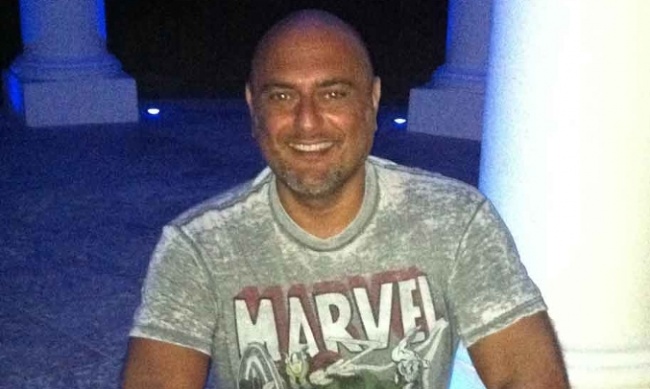
Marvel Now Again, Comic Price Resistance, Champions, More
Posted by Milton Griepp on August 16, 2016 @ 4:38 am CT
MORE COMICS
From Dynamite Entertainment
August 8, 2025
Here's a preview of Space Ghost #1, published by Dynamite Entertainment.
Dark, Erotic Manga Based on Short Story by Edogawa Rampo
August 8, 2025
Maruo brings his signature “erotic grotesque” style to a dark tale by writer Edogawa Rampo.
MORE NEWS
Thursday July 31, 2025; 'D&D,' 'Riftbound,' and More!
August 8, 2025
The story of Gen Con 2024, as told through ICv2's staff photos, began on the morning of Thursday July 31, 2025 on the convention hall floor.
New Expansion Set for the Classic Fantasy Board Game
August 8, 2025
Hasbro will release HeroQuest: First Light, a new expansion for the classic fantasy board game, into retail.



